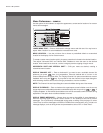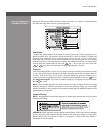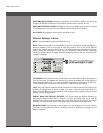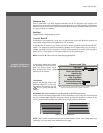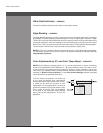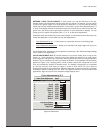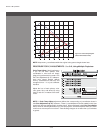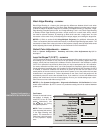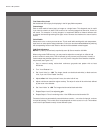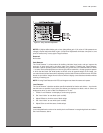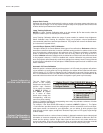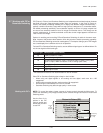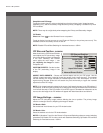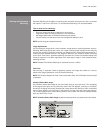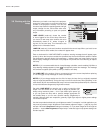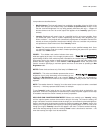
Wolf Cinema Owner's Manual
3-42
Test Pattern Grey Level
Setthedesiredlevelofgreyfordisplayinginthefullgrayeldtestpattern.
Freeze Image
Enter a check mark to freeze (stop) an image on a single frame. This diagnostic tool is useful
if you need to examine in detail a still version of an incoming image that cannot be “frozen” at
thesource.Forexample,inmovingimagesitissometimesdifculttoobserveartifactssuch
as external de-interlacing/resizing and signal noise. Remove the checkmark to return back to
normal.
Color Enable
Select which color or colors you want to see. This is useful while working with color temperature,
input levels or other special setup parameters. Colors can also be enabled/disabled by entering
the corresponding function code listed on the back of the standard remote keypad.
Odd Pixel Adjustment
NOTES: 1) Factory-set and rarely required by user. 2) Source must be >90 MHz.
When using certain RGB sources, you may need to adjust the normal gain or offset of odd
pixels in relation to even pixels. This will smooth out very narrow (one-pixel wide) “checks” or
verticalstripesthatindicateadjacent“on”and“off”pixels.UsingtheLevelDetectorsimplies
this process (see Figure 3.11):
Use an external analog native-sized continuous grayscale test pattern with at least 1.
256-levels.
Turn “Level Detector” on.2.
Set “Level Value” to 3. ~200. The image should now be black-and-white (or black-and-one
color, if you use “Color Enable” function).
Adjust 4. offset. Half of the pixels will move, the other half will not.
Adjustuntilthetwotransitionregionsoverlap.Thestripeofnoisewillbeminimized,dened5.
by the value in the slide bar.
Set “Level Value” to 6. ~800. The image should now be black-and-white.
Repeat Steps 4 and 5, but adjusting 7. gain.
Repeat Steps 3-7 for all remaining colors. Your RGB source should now be OK.8.
Two sets of values are automatically saved with these controls — one value for Input #1, and one
for Input #2 (analog). The current set of values depends on which source is in use. This enables
a source to be processed correctly via two different inputs.
Section3►Operation



